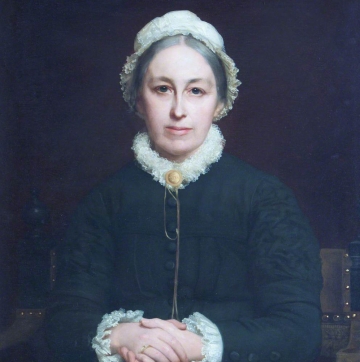Emily Davies
The full resource is FREE to all registered users of the website
If you are not already registered you can sign up for FREE website access to download the full resource.

- Born: 1830
- Died: 1921
- Occupation: Social campaigner, writer
- Claims to fame: Campaigner for the improvement of women’s education. She became one of the first mistresses of Girton College.
Early life
Originally from Southampton, Emily moved with her family to Gateshead in the north-east of England when she was young. There she established a Northumberland and Durham branch of the Society for Promoting the Employment of Women. After her father’s death in 1862, the family moved to London.
Suffrage activities
Emily played a key role in the 1866 women’s suffrage petition to Parliament, helping to arrange its printing and delivery, including to newspapers. Emily handed the petition over to MP John Stuart Mill at Parliament. Drawing on her experience in 1866, Emily helped to arrange three further suffrage petitions and signed the Declaration in Favour of Women’s Suffrage in 1889. Emily joined several suffrage societies, including the law-abiding NUWSS led by Millicent Fawcett, and she took part in several marches wearing robes denoting her honorary degree (1901) from Glasgow University. In 1912 she joined the Conservative and Unionist Women’s Franchise Association (CUWFA), becoming vice president. In 1918, and at 88 years old, Emily became one of the first women who qualified to vote in the general election.
See Emily Davies' record in the Suffrage database
Other activities
Perhaps the greatest passion of Emily’s life was her commitment to improving women’s and girls’ education. It was in 1866, the same year as the women’s suffrage petition, that she published her influential paper ‘The Higher Education of Women’, which promoted the idea of a residential college that would educate women to university level; this would become Girton College, Cambridge, in 1869. It ensured that female students could study the same curriculum as male university students at Cambridge, so that their achievements would be recognised as equal. However, male members of Cambridge University blocked the official awarding of degrees to women who had passed all the required examinations, and they were not recognised as university members. It was not until 1948 that Cambridge University finally granted women degrees on an equal basis to men.
Glossary
- Franchise – the vote
Questions
- How were women educated if they could not attend university?
- Why was it important that Emily had the petition delivered to the newspapers as well as to Parliament? 3. What was the Declaration in Favour of Women’s Suffrage in 1889?
